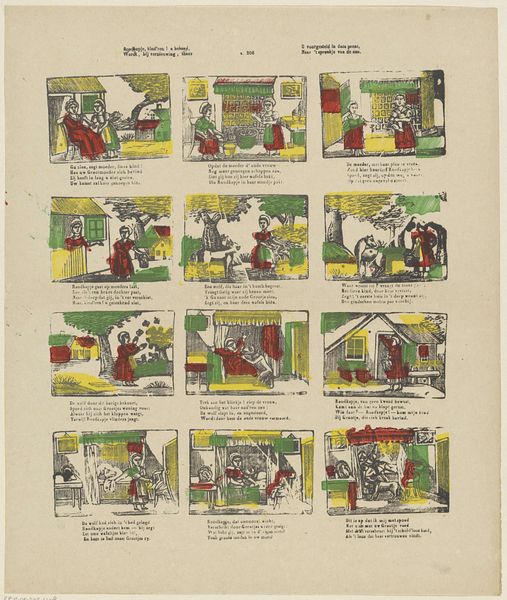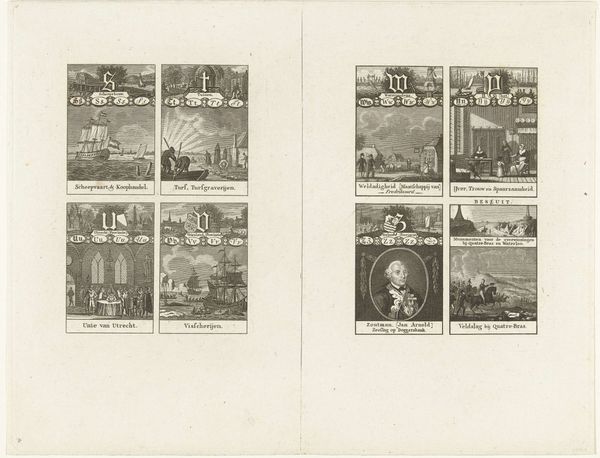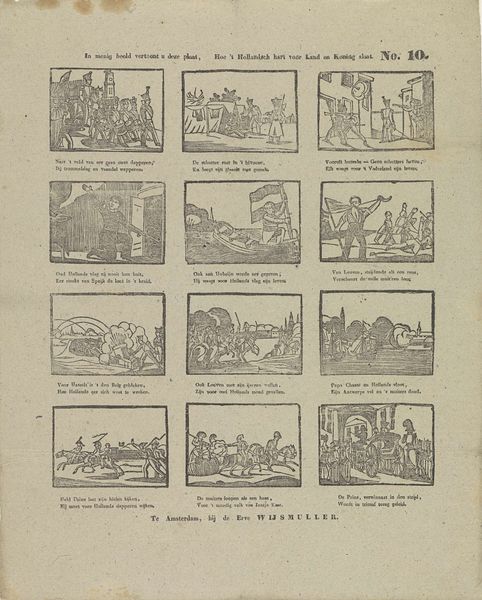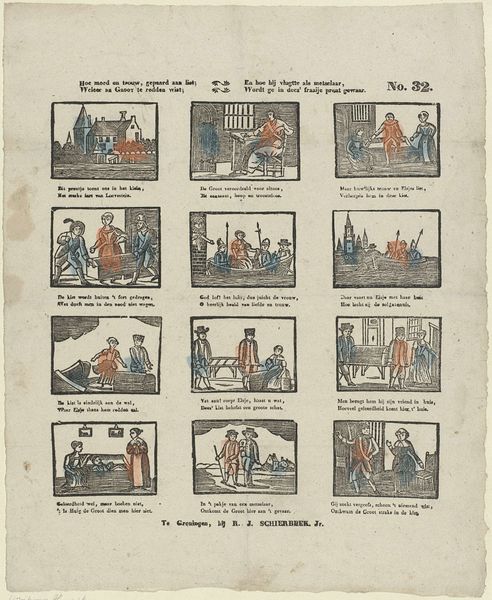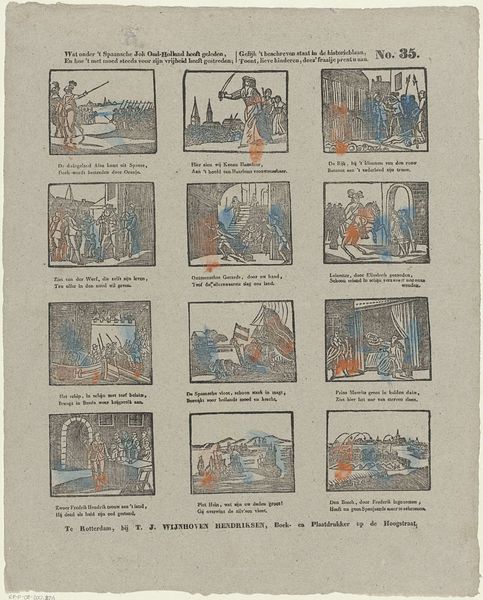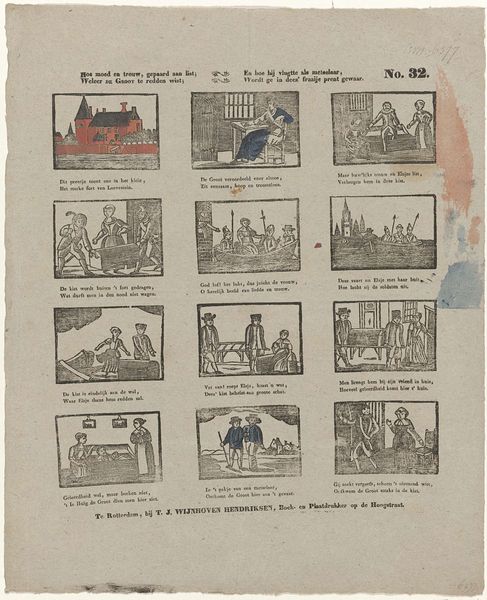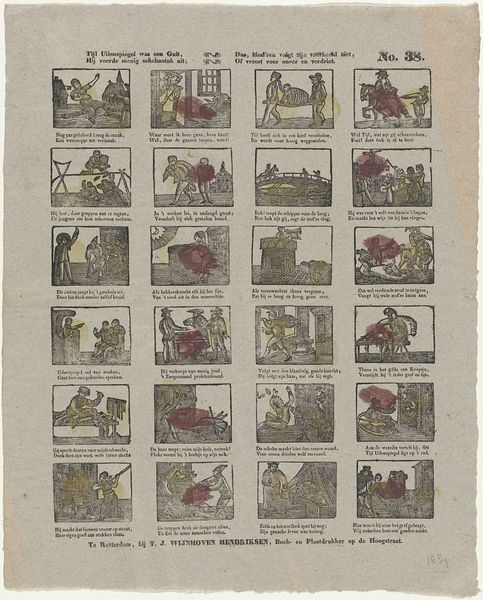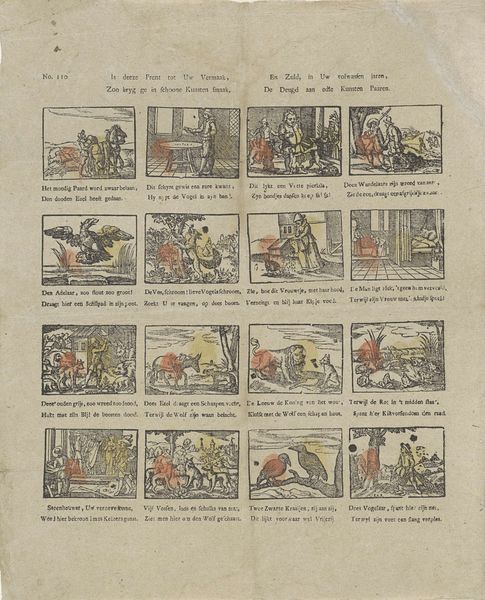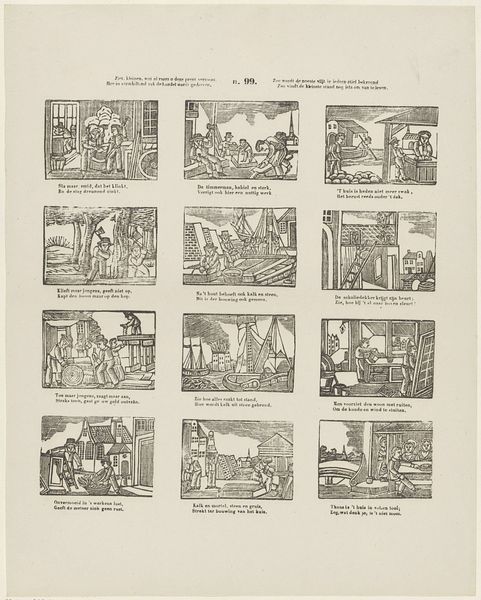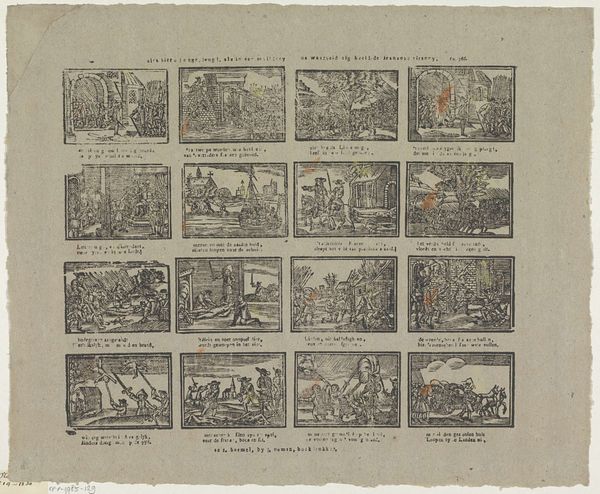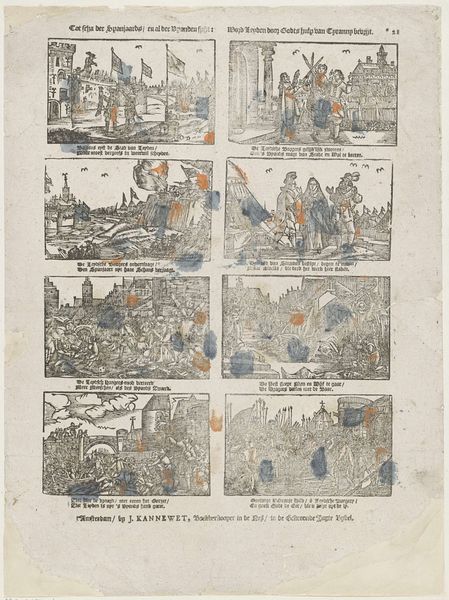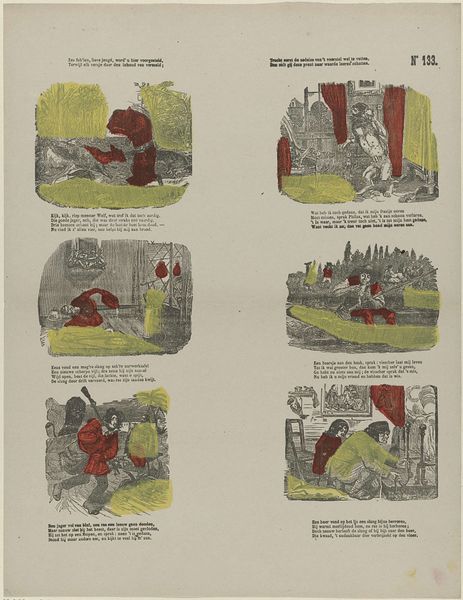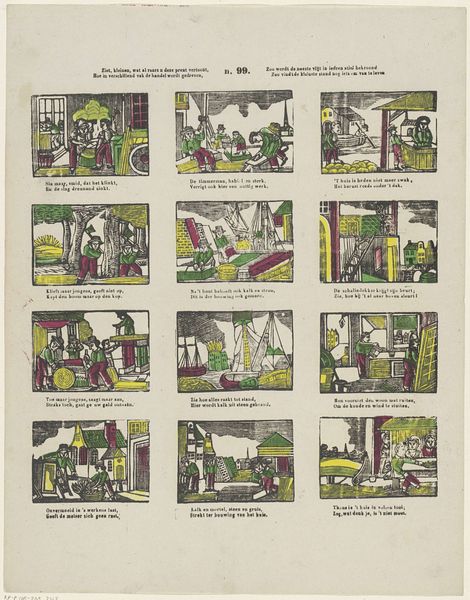
Wat onder 't Spaansche jok Oud-Holland heeft geleden, / En hoe 't met moed steeds voor zijn vrijheid heeft gestreden; / Gelijk 't beschreven staat in de historieblaan, / Toont, lieve kinderen, deez' fraaije prent u aan 1832 - 1850
0:00
0:00
graphic-art, print, woodcut, engraving
#
graphic-art
#
narrative-art
#
dutch-golden-age
# print
#
old engraving style
#
ukiyo-e
#
woodcut
#
history-painting
#
engraving
Dimensions: height 427 mm, width 339 mm
Copyright: Rijks Museum: Open Domain
Curator: Let’s turn our attention to this intriguing print titled "Wat onder 't Spaansche jok Oud-Holland heeft geleden…" dating from 1832-1850 by Theodorus Johannes Wijnhoven-Hendriksen, currently held at the Rijksmuseum. It's an engraving showcasing scenes of Dutch history. Editor: It strikes me as almost a comic strip, albeit with deeply serious subject matter. The little vignettes, though simple in style, have a very compelling and graphic quality. I'm also drawn to the muted tones, with highlights of red and green, drawing focus to those aspects of each miniature scene. Curator: Indeed. The format draws from a broader history of narrative prints common during the Dutch Golden Age, often used to disseminate information or even propaganda to a wider audience. The text accompanying each scene also plays a role in educating viewers about the depicted historical events. Editor: Considering the socio-political landscape of the time, who was the audience and what was the primary agenda? Was it about creating shared national identity or about political criticism of foreign powers and figures? It’s interesting to view it not just as art, but as an argument. Curator: It's important to remember this was created long after the events depicted. Think of the 19th century Netherlands grappling with its own national identity and political currents. Recalling the struggle for independence served to galvanize a sense of shared heritage. It highlights the notion of Dutch resilience and perseverance in the face of adversity. Editor: Right. The image's creation and display could be viewed as constructing an inclusive vision of Dutch identity and as resistance towards colonial influences of its own, and in other parts of the world. It serves as a visual language for communicating ideas of identity, nationhood, and collective historical experiences. Curator: Exactly. Considering all of this, it is no surprise that the work ended up being exhibited at the Rijksmuseum. Editor: And understanding the social forces behind these historical interpretations surely helps one better engage with the museum today. Curator: I agree; looking at the various contexts allows us to have a nuanced engagement. Editor: Precisely, it allows us to look at historical memory through a critical contemporary lens.
Comments
No comments
Be the first to comment and join the conversation on the ultimate creative platform.

